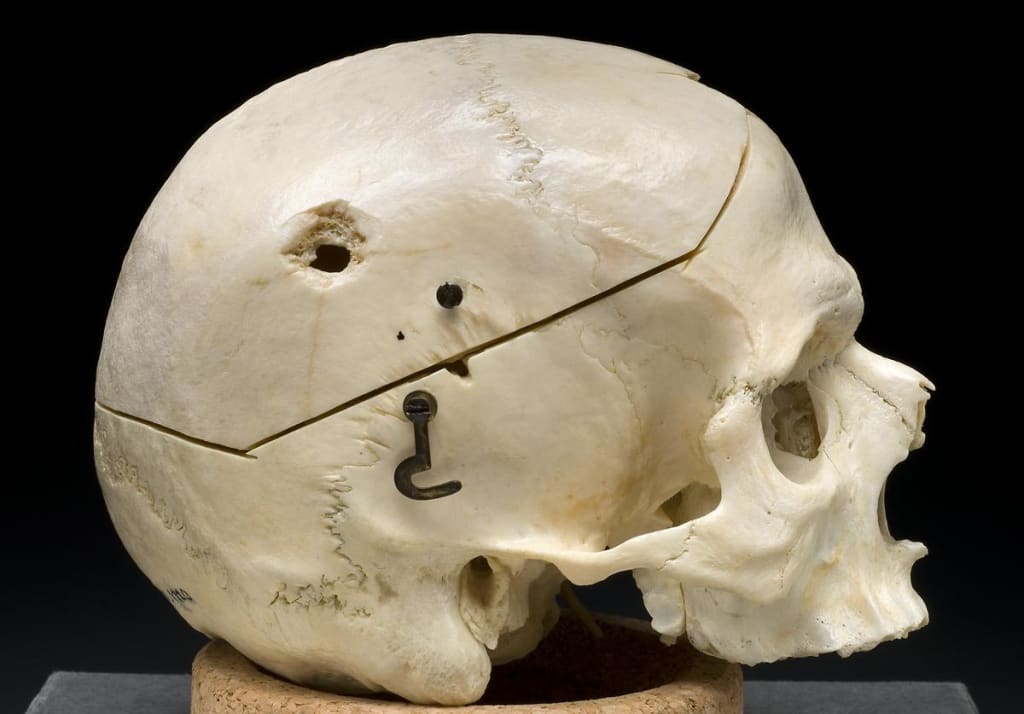
Everyone knows guns are dangerous. The fact that guns haven't changed much over the last 100 years will attest to that. But there is a lot more going on than just a hole in your body when you get shot. A 9mm handgun is a typical self-defense weapon and is often used by police departments. Bullets from these guns travel at 900 mph and all of that energy is absorbed by the target hit. The shock wave of the bullet greatly expands the area hit and then as the bullet passes through, the area hit collapses on itself. This effect causes major damage to the body, even where the bullet doesn't come into contact. This video demonstrates the shattering properties of a bullet, and the fluid-filled containers clearly show what happens to fluid-filled organs, like the bladder or heart. Most bullets do not go straight through a body. They ricochet around the body causing damage until they stop. Even bullets that do exit the body will ricochet, putting the exit wound in a completely different area than the entrance wound. The entrance wound will usually be smaller than the exit wound because the bullet has to punch its way out. The exit wound may be star-shaped.
Entrance and Exit Wounds
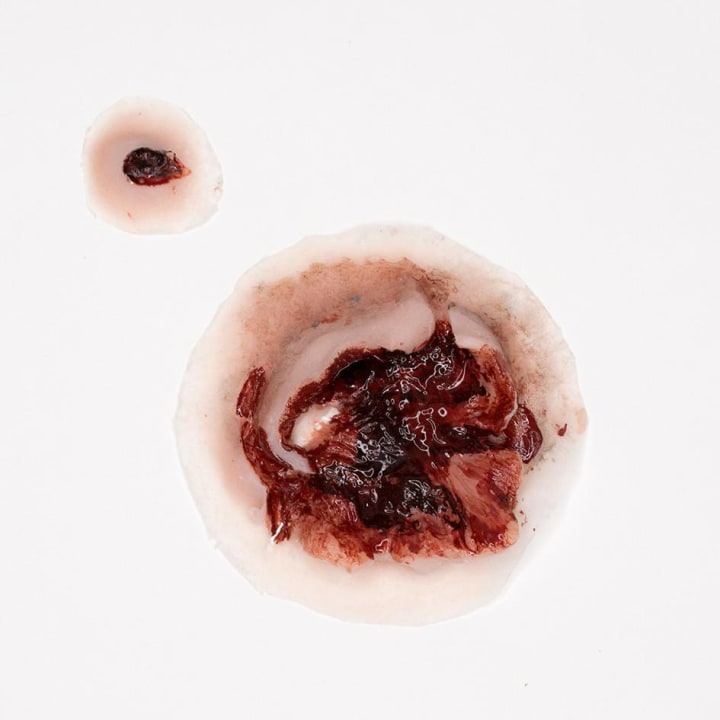
TOP ENTRANCE BOTTOM EXIT
The odds of surviving a gunshot wound have increased by 40 percent in the last 20 years. Women are 14 percent more likely to survive a similar wound to a man, and it is thought that testosterone has a negative effect on the traumatized immune system. The use of expandable sponges can dramatically reduce blood loss, which is what kills most gunshot victims. They can stop a bleeding wound in 15 seconds. A shot to the left side of the heart will cause heavier bleeding than the right side. The left side of the heart has a higher blood pressure than the right. It has to pump blood throughout the body. The right side only pumps to the lungs. A bullet to the head is less severe if it goes from front to back, and more deadly if it goes across the head. The former only disrupts one hemisphere of the brain, while the latter takes out both. The survival rate for head wounds is about 5%.
Navy Seal Mike Day
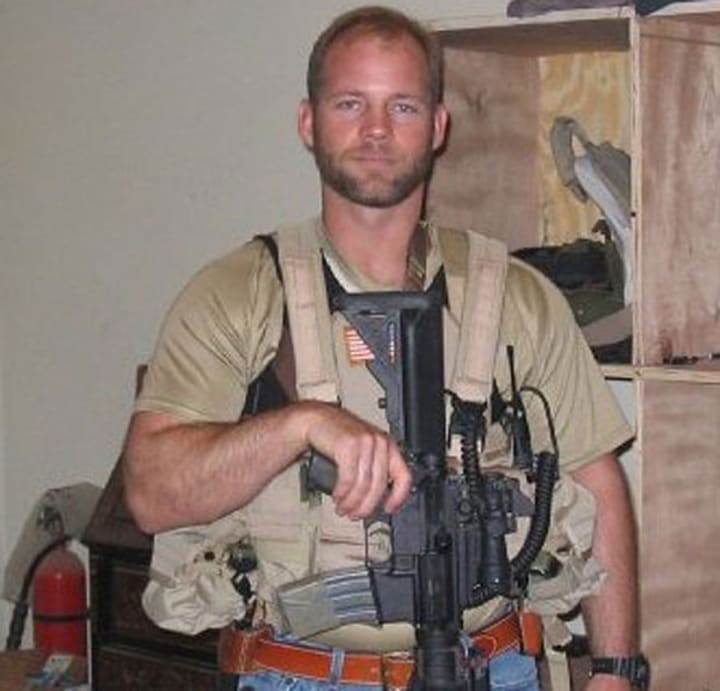
SHOT 27 TIMES
In 2007, a Navy Seal named Mike Day was shot 27 times while in Iraq and was then knocked unconscious by a grenade that exploded ten feet away. His body armor stopped 11 bullets resulting in several broken bones and severe tissue damage. Unfortunately, 16 bullets hit him in the arms, legs, and abdomen. After regaining consciousness, he killed two of the enemy. The main problem with wounds to the abdomen is not so much the bleeding as it is bacteria from the intestines and stomach. They end up spreading throughout the abdominal cavity and can cause death in about 20 minutes.
These organs are full of bacteria.
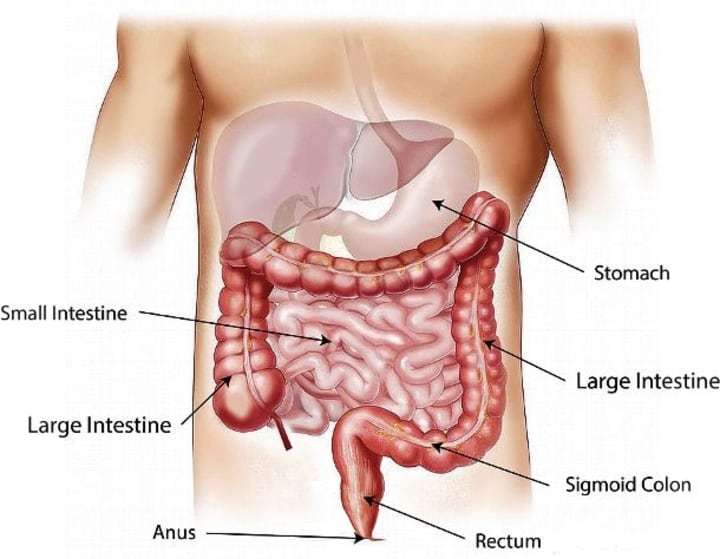
One item that must be determined is the distance the bullet travels. For the most part, criminalists want to know if the range was contact, intermediate or distant. A contact wound will usually have leave soot at the wound entrance, a muzzle imprint, and lacerations from gases expelled. Intermediate or close range shots will show stippling, tiny black burn marks from gunpowder which form a circle around the wound that decreases with proximity. They lack a muzzle imprint. Wounding from a distance produces a hole, without stippling, that reflects the caliber of the gun.
Intermediate Gunshot With Stippling
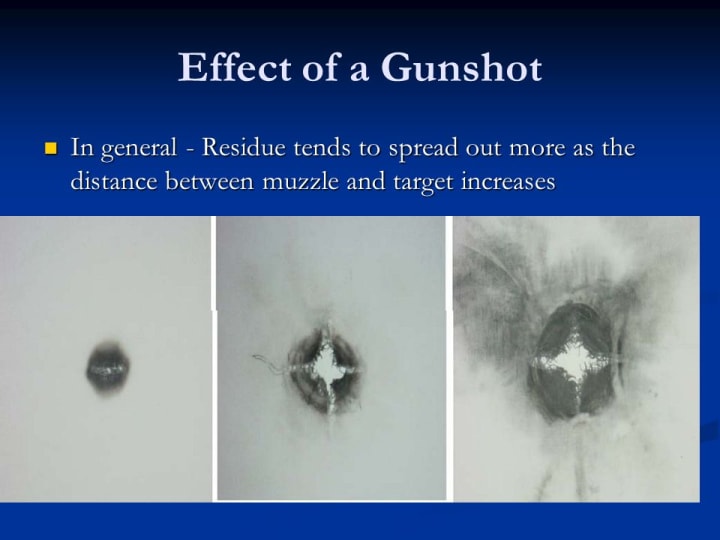
Puppe's Rule states that "if multiple gunshots or blunt force trauma wounds are present it is possible to establish the sequence of shots/hits." The fracture lines of the second shot end when they meet at the fracture lines of the first. Each bullet in succession produces fracture lines that end at a previous bullet's fracture lines. This occurs on bones such as the skull, iliac crest, and sternum.
Glass and bone fracture in similar ways.
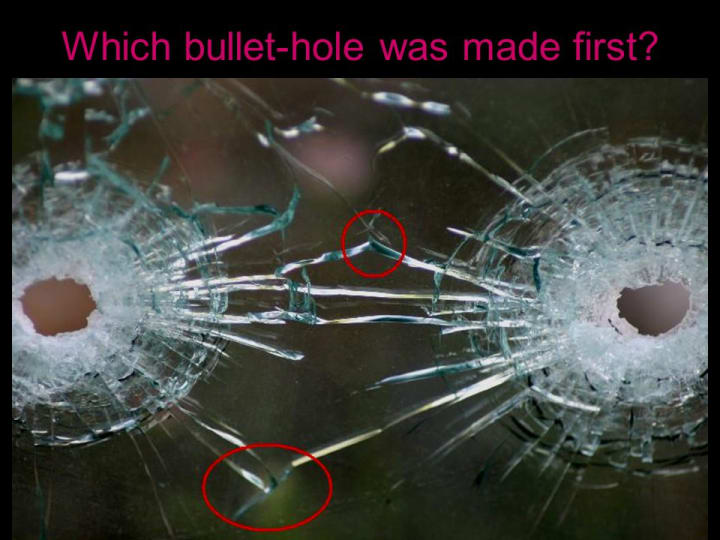
THE ONE ON THE RIGHT WAS FIRED FIRST
It is important to know that bullet wounds to the extremities can be just as fatal as a head wound, although TV and movies use these shots to disable a shooter. You have major blood vessels, both arterial and venous, all the way to the wrist and ankle. Police officers, soldiers, and other armed personnel are never trained to shoot a person to disarm them with a shoulder or arm shot. The subclavian artery in the shoulder is a large vessel, as are the femoral or iliac arteries of the leg. The damage done by a bullet can be catastrophic wherever it hits human flesh. Immediate medical care is necessary.
There are major blood vessels everywhere.
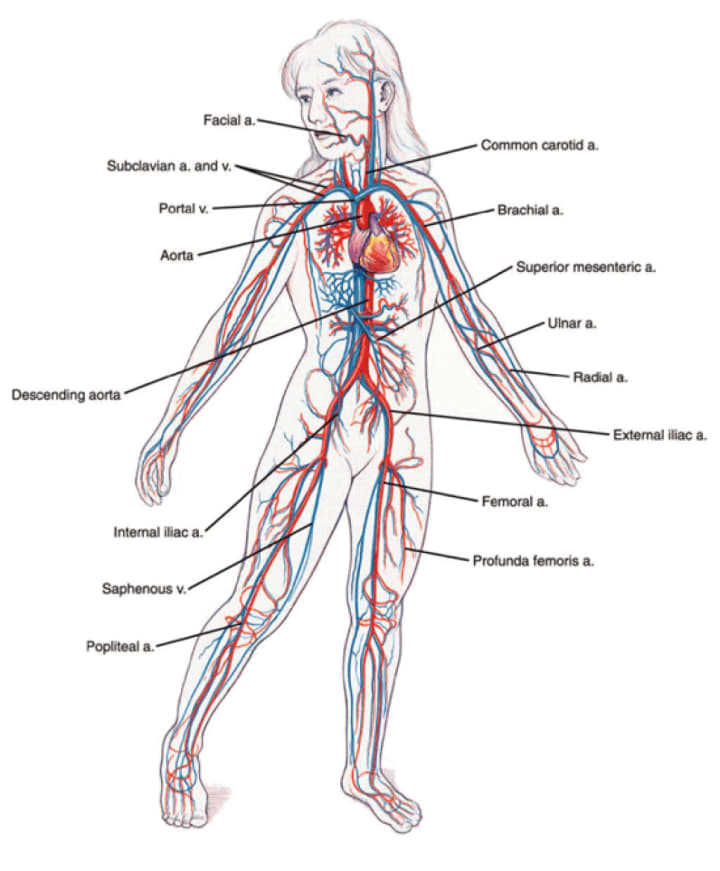
About the Creator
Monica Bennett
I am a retired high school and college teacher. I have taught forensics, biology, chemistry, ecology, and Earth science.. Long Island has been my home for 60 years.






Comments
There are no comments for this story
Be the first to respond and start the conversation.